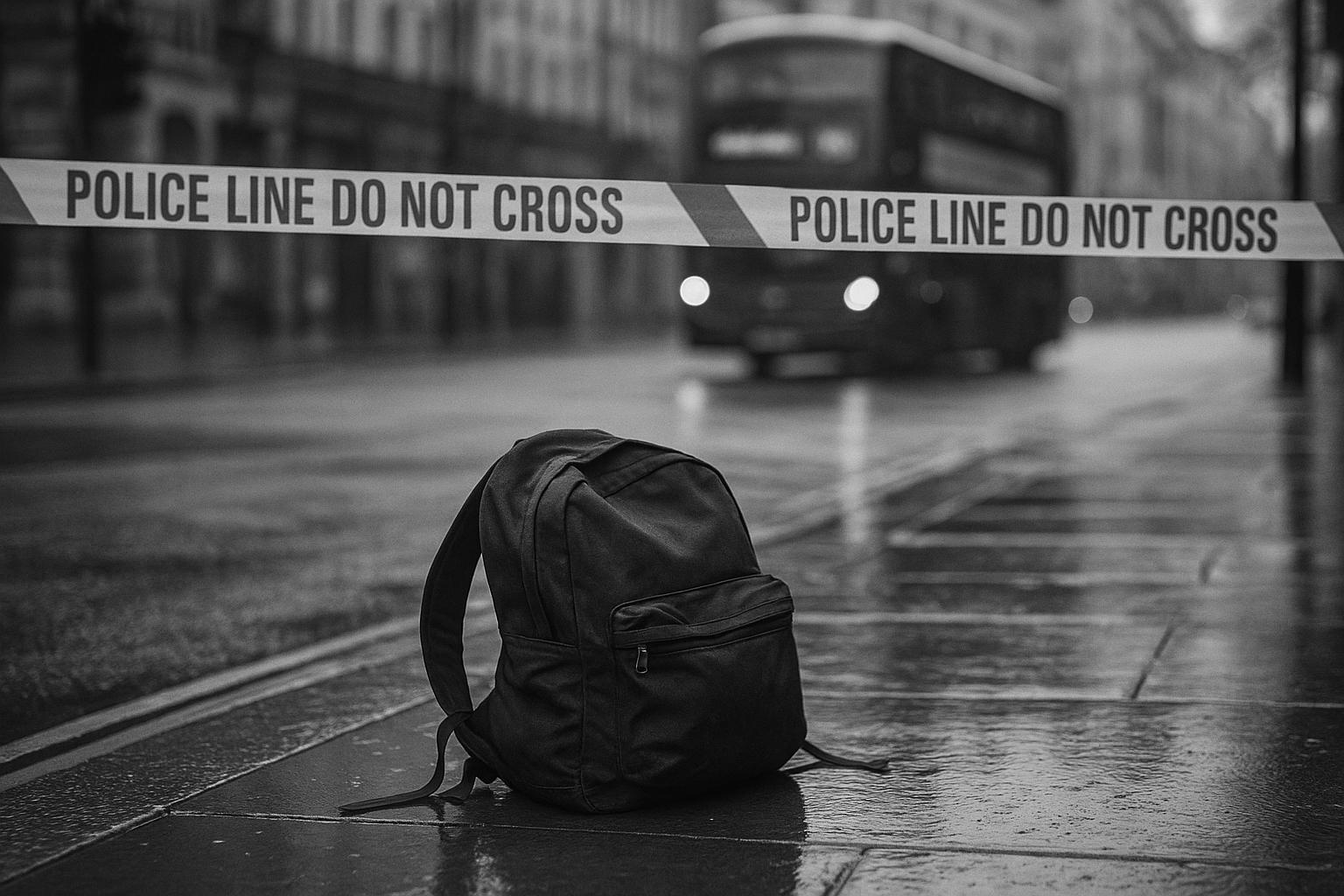The mayor’s team points to falls in knife injuries, homicides and lethal gun discharges since 2016, but opponents and bereaved families say headline percentages mask local spikes, dataset caveats and volatile year‑on‑year changes.
A row has erupted over the Mayor of London’s assertion that knife crime in the capital has fallen, after City Hall reiterated a string of statistics it says demonstrate progress since 2016. A spokesperson for the Mayor of London told the Evening Standard: “Nothing is more important to the Mayor than keeping Londoners safe. Sadiq is determined to do all he can to tackle crime and its complex causes and build on progress that has been achieved in London, with the number of young people being injured with a knife down 26 per cent, homicides down 17 per cent, gun crime with lethal barrel discharges down 43 per cent and burglary down 27 per cent since 2016.” The intervention has prompted criticism from opposition politicians and some bereaved families who dispute the mayor’s framing.
City Hall has repeatedly pointed to falls across a range of offences in material accompanying its announcements, but the exact figures depend on the comparative window and dataset cited. In separate City Hall releases the percentages vary: one press statement highlights reductions in homicides, lethal gun discharges and burglary; a separate City Hall briefing on mentoring investment set out slightly different declines for knife injuries among under‑25s and for homicides. City Hall attributes the improvements to joint work between the Metropolitan Police, the Violence Reduction Unit and local partners and to sustained investment in both policing and early intervention. It has also announced stepped‑up beat policing in town centres as part of that response.
Independent national statistics offer a broader context but also urge caution. Office for National Statistics data for the year ending March 2024 recorded 570 homicide victims in England and Wales, a 3 per cent fall on the prior year and the lowest tally since 2016 when pandemic years are excluded. The ONS analysis notes that sharp instruments remain the most common weapon and that teenagers are disproportionately affected, while also warning that small‑number year‑on‑year changes can be volatile and should be interpreted carefully.
The picture for gun crime is similarly mixed. The Metropolitan Police has reported substantial firearms recoveries — roughly one firearm seized per day in London in the most recent year — and BBC reporting shows there has been a fall in lethal barrel discharges since March 2023, from 196 to 145 incidents. At the same time, other recorded gun offences increased between 2022 and 2023, underscoring the complexity of trends in armed offending and the concentrated nature of much gun and gang violence.
Critics say headline percentages risk obscuring local and demographic variation, and families of victims have told the Evening Standard that the capital remains dangerous in certain communities. Researchers and policymakers also point to limitations in homicide datasets: the Metropolitan Police’s homicide dashboard — published to improve transparency — includes methodological notes and jurisdictional caveats, and some London killings fall under other forces such as the City of London or British Transport Police. These qualifications, along with the ONS’s warnings about small‑number volatility, are commonly invoked by analysts who urge caution about broad national or city‑wide claims.
That debate frames the policy argument City Hall is making: prevention and policing together. City Hall’s recent announcements highlight the Violence Reduction Unit, record mentoring investment aimed at more than 100,000 young Londoners and promises of extra officers in high‑impact town‑centre patrols. The mayoral team says these measures, alongside policing activity, are essential to sustain and deepen reductions; opponents say more must be done and that statistics alone are not a substitute for local safety improvements. With data showing both falls in some serious offences and rises or concentration in others, officials and community leaders agree the task remains to translate headline numbers into safer streets for the neighbourhoods still most affected.
 Reference Map:
Reference Map:
Reference Map:
- Paragraph 1 – [1], [2]
- Paragraph 2 – [1], [3], [4]
- Paragraph 3 – [5]
- Paragraph 4 – [6]
- Paragraph 5 – [2], [7]
- Paragraph 6 – [3], [4], [6], [5]
Source: Noah Wire Services
- https://www.standard.co.uk/news/crime/sadiq-khan-knife-crime-fallen-london-b1242654.html – Please view link – unable to able to access data
- https://www.standard.co.uk/news/crime/sadiq-khan-knife-crime-fallen-london-b1242654.html – Evening Standard reports on a row following Mayor Sadiq Khan’s claim that knife crime has fallen in London. The article quotes a City Hall spokesperson saying London has seen reductions since 2016: young people injured with a knife down 26%, homicides down 17%, gun crime lethal barrel discharges down 43% and burglary down 27%. It records criticism from opposition figures and families of victims who dispute the mayor’s framing. The piece outlines City Hall’s investments in policing and the Violence Reduction Unit, and notes promises of extra officers in town centres. It situates the debate amid wider national discussions about crime.
- https://www.london.gov.uk/fresh-action-londons-town-centres-build-crime-reductions-achieved-capital – London City Hall press release outlines fresh policing action in town centres and highlights claimed crime reductions since 2016. It states homicides, gun crime lethal barrel discharges and burglary have fallen, and provides metrics such as knife crime with injury for those under 25 down 21%, homicide down 23% and burglary down 26% for specified comparative periods. The release credits collaboration between the Met, the Violence Reduction Unit and local partners, and announces increased beat policing in high‑impact areas. It frames continued investment in policing alongside preventative youth interventions as central to sustaining and building on improvements in public safety.
- https://www.london.gov.uk/media-centre/mayors-press-release/mayor-delivers-record-mentoring-investment-for-100-000-young-people-most-in-need-of-support-in-london – City Hall announcement celebrates a mentoring investment reaching over 100,000 young Londoners and links the programme to falls in youth violence. It claims that since the Violence Reduction Unit began there has been a 24% reduction in homicides, a 27% drop in knife injuries for those under 25 and a 17% fall in personal robbery, citing City Hall analysis and ONS figures. The release highlights mentoring, early intervention and funding for youth services as core strategies, and notes the lowest teenage and under‑25 murder figures in more than a decade. It frames prevention alongside sustained police investment as key policy.
- https://www.ons.gov.uk/peoplepopulationandcommunity/crimeandjustice/articles/homicideinenglandandwales/yearendingmarch2024 – The Office for National Statistics report provides detailed analysis of homicide in England and Wales to year ending March 2024. It records 570 victims, a 3% decrease on the previous year and the lowest total since 2016 when excluding the pandemic‑affected year. The report examines trends by age, sex, ethnicity and method, noting sharp instruments remain the most common weapon and that teenagers are disproportionately affected. It presents tables and charts, contextualises year‑on‑year fluctuations, and cautions about small‑number volatility. The ONS release is a primary statistical source used by City Hall and the Met to interpret homicide trends in London.
- https://www.bbc.com/news/articles/cxee411r07xo – BBC News reports on Met Police comments that about one firearm per day was seized in London, reflecting concerns about gang‑related gun crime. The article cites Met figures showing 386 firearms recovered in the year and ONS data indicating a rise in recorded gun offences between 2022 and 2023. It notes a fall in lethal barrel discharges since March 2023, with incidents dropping from 196 to 145, the lowest level in fifteen years. The piece situates firearm seizures within policing efforts and gang activity, quoting Met commanders and highlighting the complexity of addressing firearms while preventing violence and protecting communities.
- https://www.data.gov.uk/dataset/b79efcc9-d488-4aaa-99a7-40b8405a6bad/mps-homicide-dashboard-data – Data.gov.uk hosts the MPS Homicide dashboard data published by the Greater London Authority, linking to the Metropolitan Police’s homicide dashboard and offering downloadable CSV files. The dataset describes homicide definitions, jurisdictional caveats and provides datasets for victims and accused, with notes on update schedules and limitations. It is intended to support transparency and research by enabling analysis of homicide trends, victim profiles and comparisons. The page warns of potential temporary disruptions and notes that some London homicides fall under City of London or British Transport Police jurisdiction. Researchers and policymakers use this dataset alongside ONS releases to evaluate homicide patterns.
Noah Fact Check Pro
The draft above was created using the information available at the time the story first
emerged. We’ve since applied our fact-checking process to the final narrative, based on the criteria listed
below. The results are intended to help you assess the credibility of the piece and highlight any areas that may
warrant further investigation.
Freshness check
Score:
5
Notes:
 The narrative presents recent claims about knife crime reduction in London, with data from the Mayor’s Office for Policing and Crime. However, similar claims have been made in previous reports, such as the Mayor’s press release from 13 October 2023, which also highlighted reductions in knife crime and other offences. ([london.gov.uk](https://www.london.gov.uk/media-centre/mayors-press-release/mayor-provides-dedicated-local-support-to-every-secondary-school-in-london-to-help-prevent-and-tackle-knife-crime?utm_source=openai)) This suggests that the narrative may be recycling previously reported information, potentially affecting its freshness score. ([standard.co.uk](https://www.standard.co.uk/news/london/sadiq-khan-criticised-office-for-statistics-regulation-knife-crime-b1124296.html?utm_source=openai))
The narrative presents recent claims about knife crime reduction in London, with data from the Mayor’s Office for Policing and Crime. However, similar claims have been made in previous reports, such as the Mayor’s press release from 13 October 2023, which also highlighted reductions in knife crime and other offences. ([london.gov.uk](https://www.london.gov.uk/media-centre/mayors-press-release/mayor-provides-dedicated-local-support-to-every-secondary-school-in-london-to-help-prevent-and-tackle-knife-crime?utm_source=openai)) This suggests that the narrative may be recycling previously reported information, potentially affecting its freshness score. ([standard.co.uk](https://www.standard.co.uk/news/london/sadiq-khan-criticised-office-for-statistics-regulation-knife-crime-b1124296.html?utm_source=openai))
Quotes check
Score:
6
Notes:
 The direct quotes attributed to the Mayor of London in the narrative appear to be consistent with those found in earlier reports, such as the press release from 13 October 2023. ([london.gov.uk](https://www.london.gov.uk/media-centre/mayors-press-release/mayor-provides-dedicated-local-support-to-every-secondary-school-in-london-to-help-prevent-and-tackle-knife-crime?utm_source=openai)) This indicates that the quotes may have been reused, which could impact the originality score. ([standard.co.uk](https://www.standard.co.uk/news/london/sadiq-khan-criticised-office-for-statistics-regulation-knife-crime-b1124296.html?utm_source=openai))
The direct quotes attributed to the Mayor of London in the narrative appear to be consistent with those found in earlier reports, such as the press release from 13 October 2023. ([london.gov.uk](https://www.london.gov.uk/media-centre/mayors-press-release/mayor-provides-dedicated-local-support-to-every-secondary-school-in-london-to-help-prevent-and-tackle-knife-crime?utm_source=openai)) This indicates that the quotes may have been reused, which could impact the originality score. ([standard.co.uk](https://www.standard.co.uk/news/london/sadiq-khan-criticised-office-for-statistics-regulation-knife-crime-b1124296.html?utm_source=openai))
Source reliability
Score:
8
Notes:
 The narrative originates from The Standard, a reputable UK news outlet. However, the Office for Statistics Regulation has previously rebuked the Mayor for making incorrect claims about falling knife crime, which could affect the credibility of the information presented. ([standard.co.uk](https://www.standard.co.uk/news/london/sadiq-khan-criticised-office-for-statistics-regulation-knife-crime-b1124296.html?utm_source=openai))
The narrative originates from The Standard, a reputable UK news outlet. However, the Office for Statistics Regulation has previously rebuked the Mayor for making incorrect claims about falling knife crime, which could affect the credibility of the information presented. ([standard.co.uk](https://www.standard.co.uk/news/london/sadiq-khan-criticised-office-for-statistics-regulation-knife-crime-b1124296.html?utm_source=openai))
Plausability check
Score:
7
Notes:
The narrative presents claims about reductions in knife crime and other offences in London. While these claims are supported by data from the Mayor’s Office for Policing and Crime, the Office for Statistics Regulation has previously rebuked the Mayor for making incorrect claims about falling knife crime, which raises questions about the accuracy of the data presented. ([standard.co.uk](https://www.standard.co.uk/news/london/sadiq-khan-criticised-office-for-statistics-regulation-knife-crime-b1124296.html?utm_source=openai))
Overall assessment
Verdict (FAIL, OPEN, PASS): FAIL
Confidence (LOW, MEDIUM, HIGH): HIGH
Summary:
 The narrative presents claims about reductions in knife crime in London, but these claims have been previously reported and have been subject to official rebuke for inaccuracies. This raises concerns about the freshness and accuracy of the information presented, leading to a ‘FAIL’ assessment with high confidence.
The narrative presents claims about reductions in knife crime in London, but these claims have been previously reported and have been subject to official rebuke for inaccuracies. This raises concerns about the freshness and accuracy of the information presented, leading to a ‘FAIL’ assessment with high confidence.













